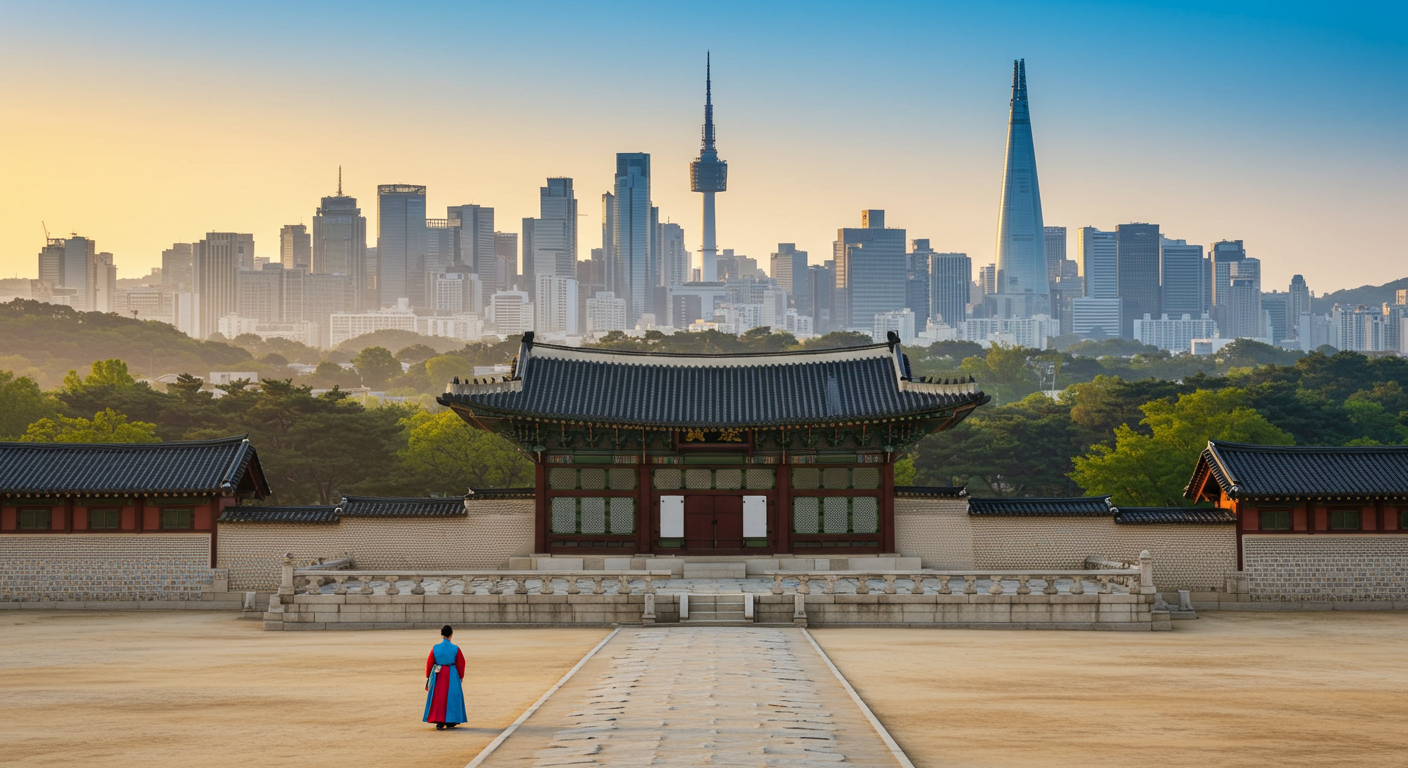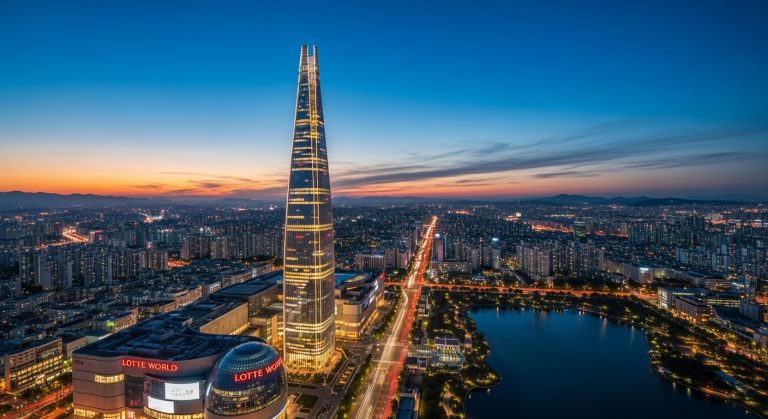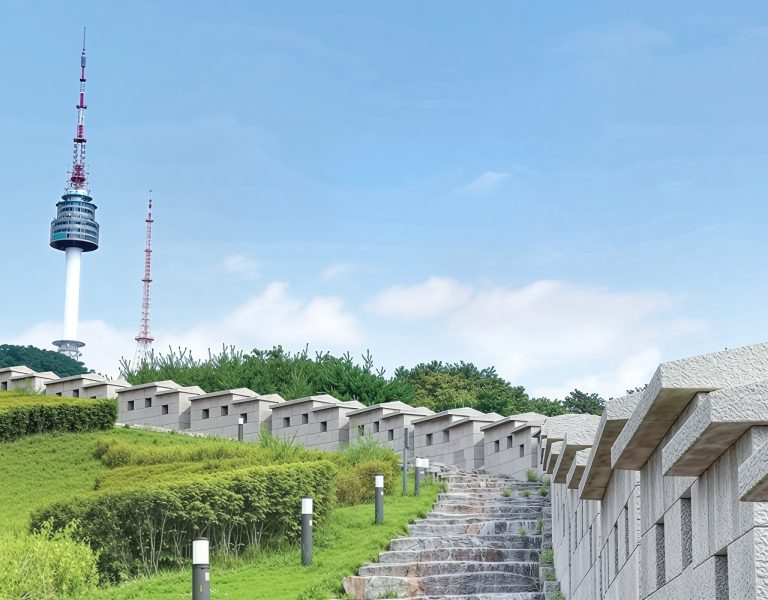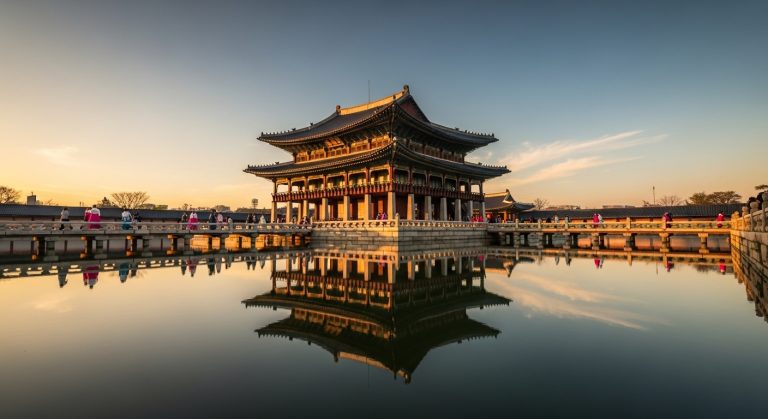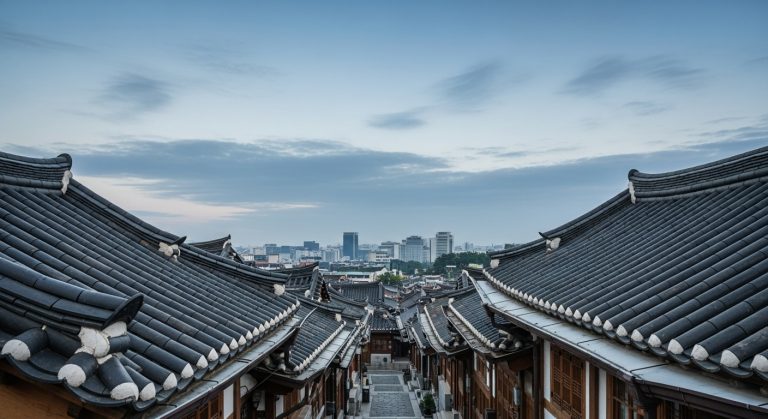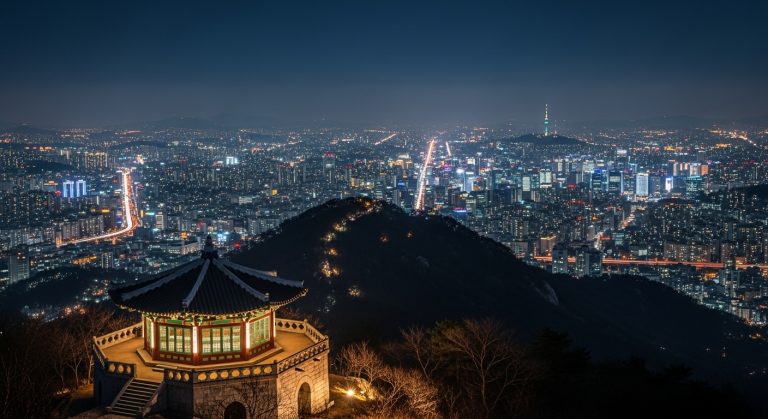Ikseon-dong Hanok Street: The Ultimate Guide to Seoul’s 1920s Hidden Gem

Have you ever longed for a place where you could step back into the past while still enjoying the comforts and style of the present day? I know I have!
Seoul, a city famous for its dizzying blend of skyscrapers and ancient palaces, holds a secret neighborhood that perfectly captures this feeling, and it’s a place I absolutely adore: Ikseon-dong Hanok Street.
For a long time, this small cluster of 1920s hanok (traditional Korean houses) was quietly overlooked, overshadowed by the grander Bukchon Hanok Village. But over the last decade, Ikseon-dong has experienced a charming, artistic revival, transforming its narrow, labyrinthine alleys into a treasure trove of trendy cafes, fusion restaurants, and one-of-a-kind boutiques.
It’s a neighborhood that simply oozes character and is wildly popular with young couples looking for the perfect date spot—or anyone, really, who appreciates a bit of history mixed with serious style. If you’ve ever felt overwhelmed by the sheer scale of Seoul and wished for a cozy, atmospheric pocket to explore, Ikseon-dong is your answer.
I’m here to guide you through every crooked, photogenic corner of this charming village. We’ll dive into its unique history, uncover the must-visit spots, and share my personal tips to help you experience its special atmosphere, whether you visit during a bustling afternoon or on a quiet, atmospheric night. Get ready to explore this truly one-of-a-kind urban haven! 🤩
The Ikseon-dong Vibe: Where Seoul’s Past Meets Modern Chic 🕰️
When you first step off the bustling streets of Jongno and into Ikseon-dong’s maze of low-slung, tiled rooftops, the air changes completely. This isn’t the grand, aristocratic hanok style you find in places like Bukchon; Ikseon-dong is smaller, denser, and far more humble, reflecting its origins as one of Seoul’s oldest and most unique residential developments.
What makes it so special is the unique cohabitation of the old structure and the new function. Every single café and shop you see is a carefully preserved and minimally modified hanok, ensuring the architecture remains the star of the show while the interiors offer everything modern Seoul has to offer.
The result is a vibe that is simultaneously nostalgic and cutting-edge. You walk past walls made of aged brick and weathered wood, then peek inside to see neon signs, artisanal coffee makers, and French cuisine being served. It’s a sensory experience that constantly contrasts traditional aesthetics with contemporary trends.
I always get this sense of stepping into a beautifully curated time capsule—it’s like the neighborhood itself is whispering stories of the past while posing for an Instagram photo in the present. This fusion atmosphere is the reason why many locals prefer it over the more historically rigid nearby areas like Insa-dong.
A Brief Look at Ikseon-dong’s History
The Ikseon-dong *hanok* were primarily built in the 1920s. This period was a time of rapid modernization and urbanization in Korea under Japanese colonial rule, leading to new styles of housing.
These hanoks are characterized by their dense, clustered design and the fact that they were smaller and more practical than the large, aristocratic homes found elsewhere. This dense arrangement is actually what preserved the neighborhood from demolition for so long; the properties were so interconnected and small that redeveloping the entire area became financially and logistically challenging, a stroke of good fortune for us modern-day visitors!
For decades, the area was largely residential and somewhat forgotten. Then, around the early 2010s, independent designers, artists, and small business owners recognized the unique charm of the aging architecture.
They began leasing and renovating the *hanok* interiors into trendy businesses while keeping the exterior traditional appearance intact. This organic, grassroots revitalization is what sets Ikseon-dong apart from government-planned tourist zones, and you can truly feel that authentic, personal touch everywhere you look.
Essential Guide to the Best Ikseon-dong Spots ☕🍽️
The real magic of Ikseon-dong lies in its hidden gems. Since the streets are a tight maze, exploring is half the fun. You won’t find huge storefronts here; instead, you’ll discover unique venues by simply turning a corner and following the atmosphere.
I always recommend going in without a firm plan—just let the scent of coffee or the sound of light jazz guide you. However, to get you started, here are the absolute must-do’s and must-sees, broken down by category.
The Most Photogenic Cafes
Ikseon-dong is arguably the epicenter of Seoul’s *hanok* cafe scene. These aren’t just coffee shops; they are exquisitely designed spaces that feel like living art installations.
You’ll often find an open courtyard (*madang*) in the center, giving the space an airy, peaceful quality that is a welcome escape from the city hustle.
- • *Hanok* Garden Cafes: Look for cafes that incorporate the traditional *madang* (courtyard) into their seating. These are typically the most popular, especially on sunny days. You can often sit inside a glass enclosure facing the courtyard, which is particularly lovely.
- • Retro-Themed Cafes: Many spots lean into the 1920s to 1950s aesthetic, featuring vintage radios, antique furniture, and mood lighting. These are fantastic for photos and often specialize in traditional Korean desserts like *patbingsu* (shaved ice).
- • Specialty Coffee Roasters: Don’t overlook the places focusing solely on the bean. They combine the traditional architecture with high-end coffee technology, creating a unique juxtaposition that serious coffee lovers appreciate.
Must-Try Restaurants and Dining
The dining scene in Ikseon-dong is heavily dominated by fusion cuisine, a reflection of the neighborhood’s old-meets-new identity. This is the perfect place to try Italian pasta with Korean seaweed, or a Western-style steak served with traditional fermented sauces.
A traveler review mentioned a French restaurant converted from a *hanok* that served a delicious *aglio e olio* pasta. The variety is huge, so there’s something for every palate.
🍲 Dining Recommendation: The *Guksu* (Noodle) Houses
Keep an eye out for the more traditional Korean eateries that have survived the revitalization. One example is the famous *Halmeoni Kalguksu* (Grandma’s Noodle Soup) house, known for its affordable, rich anchovy broth and its signature dish that mixes *kalguksu* (knife-cut noodles) and *sujebi* (hand-pulled dough flakes). Eating authentic Korean comfort food in a century-old *hanok* is an experience that grounds you right in the heart of Seoul.
Remember, because the hanoks are small, the restaurants are also small, and seating is limited. On weekends, particularly, you must either make a reservation well in advance or be prepared to queue for a table, especially at dinner time.
Trust me, the atmosphere is worth the wait, but being prepared will save you from “hangry” tourist moments!
Navigating the Alleys: Tips for the Best Experience 🗺️
A successful visit to Ikseon-dong depends less on following a map and more on following my practical tips. The area is condensed and can be easily explored in half a day, but the timing of your visit makes all the difference.
It’s a different neighborhood in the morning than it is at night, and I want you to see it at its absolute best.
While it’s beautiful during the day, I personally think Ikseon-dong is at its most magical at night or during winter. The low, connected eaves of the *hanok* create a unique tunnel effect in the alleyways. When string lights are turned on across the rooftops and lanterns illuminate the wooden walls, the atmosphere becomes incredibly romantic and evocative. Plan your visit to overlap with sunset for the full effect!
Walking and Sightseeing Strategy
-
**Start at Jongno 3-ga Station:** The neighborhood is most easily accessed via Jongno 3-ga Station (Lines 1, 3, or 5), Exit 4. This puts you directly on the edge of the Hanok Street, making navigation simple.
I recommend grabbing a coffee first, as most shops open around 10 or 11 AM. -
**Look Up, Not Out:** Many of the best architectural details, such as the tiled roofs, eaves, and interconnected walls, are best appreciated by looking up. Since the alleys are narrow, it’s easy to focus only on the ground-level shops.
Take a moment to step back and admire how the roofs join together, creating the neighborhood’s unique, low-slung skyline. -
**Go Off the Main Path:** The main alleys connecting the popular cafes are often crowded. The true gems are usually found in the tiny, unmarked side passages.
Venture just a few meters off the main thoroughfare, and you might find a quiet tea house or a tucked-away gallery. -
**Dress for Photos:** Seriously, this place is a photo paradise. The rustic walls, beautiful window frames, and moody lighting are perfect backdrops.
You’ll see many locals wearing slightly retro or traditional-inspired clothing to match the atmosphere, which adds to the fun!
Beyond the Food: Shopping and Culture Experience 🛍️
Ikseon-dong isn’t just a place to eat and drink; it’s a hub for unique shopping and cultural experiences that you won’t find in Seoul’s big department stores.
Because the rent is high and the spaces are small, the shops here must be highly specialized and unique to survive, which is great news for us consumers!
Unique Retail Finds
You’ll find very few mass-market chains here; most retailers sell handmade goods, vintage clothing, or artisanal products.
This focus on *slow commerce* is part of Ikseon-dong’s enduring appeal, allowing you to bring home a truly meaningful souvenir.
- Accessory and Jewelry Shops: Look for stores that incorporate traditional Korean patterns (*dancheong*) or shapes into modern jewelry. These make exceptional, easy-to-carry gifts.
- Scent and Candle Boutiques: Several shops specialize in candles, diffusers, and perfumes, often featuring scents inspired by traditional Korean ingredients or seasonal flowers. The atmosphere inside these *hanok* shops is often incredibly serene and calming.
- Vintage and Used Book Stores: Because of the neighborhood’s old-school charm, it’s a natural fit for vintage shops. You can often find rare books or used clothing that perfectly fits the nostalgic aesthetic.
Be aware that while the items are unique and high-quality, they can be quite expensive due to the artisanal nature and the area’s trendiness. A traveler review noted that buying things can be a little burdensome on the wallet. Don’t feel pressured to buy everything, but appreciate the craftsmanship!
Planning Your Ikseon-dong Day Trip: Integrating Nearby Sights 🏯
Ikseon-dong is centrally located and sits within walking distance of some of Seoul’s most significant historical and cultural landmarks. This makes it an ideal spot to anchor a full day of sightseeing.
You can easily spend your morning at a grand palace, stroll over for a unique lunch in Ikseon-dong, and then finish your day with shopping or another historical tour.
I always recommend pairing Ikseon-dong with a dose of traditional history to really appreciate the contrast. The shift from a massive, imperial palace complex to the intimate, commoner-style *hanok* of Ikseon-dong is a fascinating study in Korean architectural history.
It truly brings the past to life by showing you two different sides of historical Korean society.
Top 4 Nearby Destinations
| Landmark | Why Visit | Walking Time |
|---|---|---|
| Gyeongbokgung Palace | Seoul’s largest and most famous royal palace. Essential for Korean history and stunning photo opportunities (especially with *hanbok* rental). | ~15-20 min |
| Changdeokgung Palace | A UNESCO World Heritage site known for its beautiful Secret Garden (*Huwon*). It’s more naturally integrated into the landscape than Gyeongbokgung. | ~10 min |
| Jongmyo Shrine | The oldest and most authentic Confucian royal ancestral shrine, designated a UNESCO World Heritage site. It’s incredibly austere and peaceful. | ~5 min |
| Insa-dong | Known for its art galleries, traditional craft shops, and street food. It offers a more overtly commercial traditional feel, contrasting Ikseon-dong’s fusion style. | ~10 min |
Interactive Element: The Ikseon-dong Vibe Calculator 🔢
To help you plan the perfect experience, I created a simple “Vibe Calculator.” Use it to determine the best dining/activity type for your visit based on your party size and preferred style!
This helps manage the expectation of crowds and seating, which is crucial in this small village.
🔢 Determine Your Ideal Ikseon-dong Experience
Summary: Why Ikseon-dong Must Be on Your Seoul Itinerary 💯
As we wrap up our detailed tour, I hope you feel as excited as I am about exploring Ikseon-dong Hanok Street! It truly is Seoul’s most captivating blend of the past and the present, offering an experience that is both deeply rooted in history and thrillingly modern.
From the quiet crunch of traditional roof tiles to the vibrant buzz of a trendy fusion kitchen, this neighborhood offers a sensory journey unlike any other.
Remember, the key to enjoying Ikseon-dong is to embrace the small scale and the spontaneity. Don't rush; take your time. Let the crooked alleyways lead you, and don't be afraid to step into a tiny shop that catches your eye.
Whether you are seeking a romantic date night atmosphere, a unique coffee experience, or just the perfect backdrop for your Seoul travel photos, Ikseon-dong is waiting to charm you.
Thank you for joining me on this virtual tour! Do you have a favorite *hanok* cafe you’ve discovered, or are you planning your first visit now? Let me know in the comments below! 👇
FAQ: Your Ikseon-dong Questions Answered
Is Ikseon-dong better than Bukchon Hanok Village?
Is it crowded? Should I go on a weekday?
Can I find traditional Korean food there?
How far is it from the palaces?
